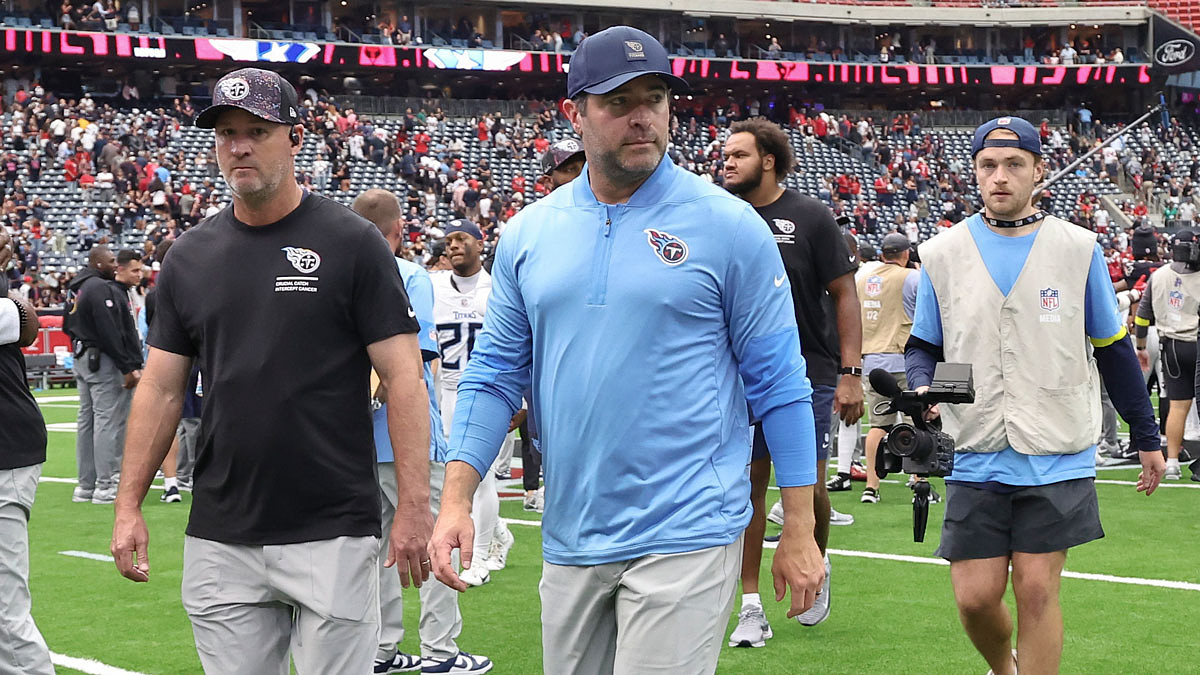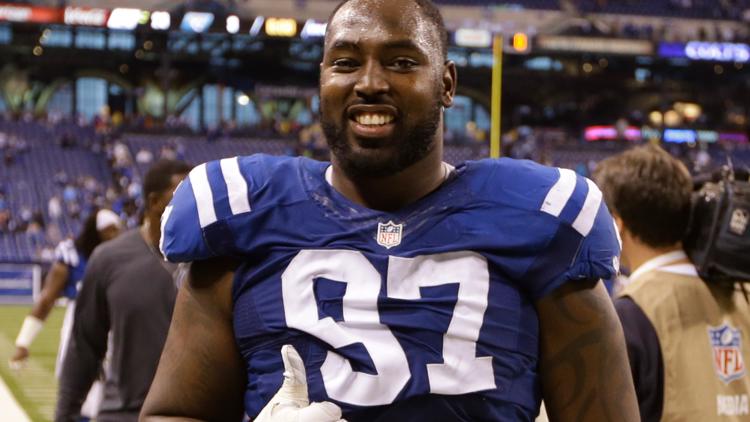Titan Troubles: Unmasking the Players Who Are the Problem and the Solution
The Tennessee Titans have a lot of problems. They have coaching problems, they have player problems, they have discipline problems, they have finishing problems, and for those in the back who may not have heard me, they have coaching problems.

Everything has gone awry at some point through the first month. The team is 0-4 and very little is working. Practically everyone on the planet has come to the same conclusion about this Brian Callahan coaching staff: it’s not working out. They deserve to be fired for the way the first month has played out, which is something that feels almost inconceivable to already be at a consensus about. It’s shocking how fast this all fell apart.
Titans Woes Continue Until Players Turn This Around
The bottom line for this team in 2025, regardless of who is at the coaching helm, is that their starters are largely under-performing. We can argue over how much of that is a coaching issue and how much is on the players. The coaches have said they need to put the players in a better spot, the players are adamant that the coaches can’t go out there and do the job for them, that it’s on them.
There’s no question where the majority of the fanbase would fall on this. It’s much easier to hope an in-season coaching change will magically turn this group into a bunch of over-performers than it is to accept the starters you’re stuck with this season simply aren’t playing well. The truth, in my opinion, is somewhere in the middle. It’s no coincidence so many of these veterans are playing worse than we’ve seen them play in the past in tandem. Coaching absolutely plays a role in that. At the same time, coaches aren’t the ones missing tackle, blowing assignments, and failing to catch the football. That’s on the guys in uniform.
I went through the Titans list of 23 starters (including a 12th defensive starter as the depth chart does) and placed them into three buckets: “The Problem”, “Not The Problem”, and “The Solution”. This exercise wasn’t particularly tricky based on each players first month of play, but it certainly was illuminating to see how few Titans are pulling their weight.
The Problem
- QB Cam Ward
- WR Calvin Ridley
- WR Tyler Lockett
- Right Tackle
- EDGE Arden Key
- EDGE Dre’Mont Jones
- LB Cody Barton
- CB L’Jarius Sneed
- S Amani Hooker
Yes, Cam Ward is a part of the problem at this point. He wasn’t to begin the year, but he’s trended in the wrong direction. DeShone Kizer is the only QB since the inception of QBR as a statistic in 2006 to have a worse QBR than Cam Ward in his first four starts. The statistics are more dramatic than the reality of the situation, but the point remains: he’s not helping at the moment.
Calvin Ridley’s woes are well-documented, he’s clearly a part of the problem so far. Tyler Lockett (or whoever you want to slot into the WR3 position) isn’t helping a lick. Lockett was targeted four times in Houston and didn’t make a play on any of the balls.
The right tackle position is obviously a big part of the problem as long as JC Latham is still out and it’s a revolving door of backups. And in the trenches on the other side of the ball, the entire EDGE room has been and will probably remain a part of the problem all year long. So Arden Key and Dre’Mont Jones, you’re on the list until you start showing up with any amount of consistency. In Key’s defense, he’s coming off his best game of the year in Houston. Hopefully he can parlay that momentum and start contributing to the solution for this team in October.
How about Cody Barton? I think relative to the expectations we had for him coming in, he’s firmly a part of the problem so far if you ask me. He hasn’t been the field general force in the middle of the field that I think he’s capable of being.
In the secondary, L’Jarius Sneed’s first full game back was net-promising against Davante Adams in Week 2. But since then, he’s been disappointing and problematic on the penalty front to boot. And Amani Hooker, whose contract was just extended, isn’t a pulling his weight either. His career high missed tackles in a single season is 9. Through four games this year, he up to 6. That’s on pace for 25 missed tackles! Not good!
Not The Problem
- TE Chig Okonkwo
- C Lloyd Cushenberry
- G Kevin Zeitler (?)
- LT Dan Moore (?)
- WR Elic Ayomanor
- DL Sebastian Joseph-Day
- DL James Lynch
- LB Cedric Gray
- Cornerback 2
- CB Roger McCreary
- S Xavier Woods
So 9 starting positions out of 23 are arguably “The Problem” right now. That’s a total non-starter for any team. But what’s even more disheartening is how few players are truly part of the solution right now. Chig Okonkwo hasn’t been a huge problem for this team, but how much playmaking has he done? Rookie WR Elic Ayomanor has been really promising, but he’s still a rookie going through the process of leveling up as an NFL starter.
Lloyd Cushenberry has been perfectly fine. Kevin Zeitler to his right and Dan Moore to his left haven’t quite been the problem in my estimation, but I’d be willing to hear that argument. They’re at least teetering.
The interior defensive line as a whole isn’t a problem. Cornerback two and three aren’t really an issue either. LB Cedric Gray is coming off a career-best game with 17 tackles. And S Xavier Woods has been a net positive.
The Solution
- G Peter Skoronski
- RB Tony Pollard
- DL Jeffery Simmons
For my money, these three are the only real solutions on this team right now. They are the ones rowing hardest in the right direction. Jeffery Simmons has been the best interior defensive tackle in the entire league through four games. You can read more about him dominance here.
LG Peter Skoronski has been very strong and easily the best offensive lineman on the team. He’s been as-advertised. And RB Tony Pollard has run the ball very hard, finding particular success behind the stout middle of the offensive line.
This list needs to grow, and it needs to grow soon. That is, if the Titans hope to win a game this season.
How Quinshon Judkins’ rising workload can power the Browns past Minnesota

The Browns enter Week 5 in a state of transition, and with a quarterback change from veteran Joe Flacco to rookie Dillon Gabriel, the identity of the offense is shifting.

That makes Quinshon Judkins -- Cleveland’s second-round pick and increasingly featured ball-carrier -- the most important swing piece in Sunday’s matchup with the 2-2 Minnesota Vikings in London. Judkins has quietly seen his role expand each week, and the trajectory isn’t subtle.
Quinshon Judkins could be the difference in Browns-Vikings Week 5
He logged 10 carries in Week 2 against Baltimore, jumped to 18 against Green Bay in Week 3, and hit 21 last week against Detroit. That kind of intentional workload increase signals trust from the coaching staff and recognition that his skill set can carry the offense through uncertainty at quarterback.
At 220 pounds, Judkins brings the kind of density and power that wears on a front seven over four quarters. He’s not contact-shy, and he doesn’t need wide-open lanes to generate yardage. Between the tackles, he’s patient yet decisive -- able to sift through traffic, stay square to the line, and use short-area power to break arm tackles and fall forward.
If the Browns want to control tempo and slow the game down for Gabriel, feeding Judkins downhill gives them a sustainable avenue.
But labeling him as just a physical grinder misses half of what makes him dangerous. Unlike many backs of his size, Judkins has the lateral agility and burst to stress defenses horizontally. He can bounce runs off tackle, plant, and explode through cutback lanes when linebackers over-pursue.
His footwork allows him to navigate tight creases, and his vision in space makes him lethal when the edge is sealed. That ability to threaten both inside and out is exactly what puts extra pressure on Minnesota, an aggressive unit that will look to stack the box early.
However, defensive coordinator Brian Flores and Minnesota's front seven are coming off a poor showing against a less dynamic back than what Judkins presents. Kenneth Gainwell, not widely considered a high-volume workhorse, rattled off 99 yards and scored twice against Flores' group last week when the Steelers attacked both their interior and perimeter fits.
Minnesota’s linebackers were slow to fill, angles were sloppy, and defenders struggled to finish plays in space. If those breakdowns surface again, Judkins’ combo of size and suddenness could rattle off chunk play after chunk play before the game even finds its footing.
If the Vikings want to load the box to protect the A and B-gaps, Cleveland can stress the C-gap (outside shoulder of the offensive tackle) with tosses, outside zone, and counter. If they widen out to prevent edge runs or play lighter boxes to help the secondary, Judkins can gash them downhill and create manageable down-and-distance scenarios for a rookie quarterback.
That’s where the Gabriel-Judkins relationship becomes central.
With a young passer taking over, head coach Kevin Stefanski won't ask Gabriel to throw 35 times into disguised looks. Instead, the Browns can build the offense around Judkins’ versatility. His inside running forces defensive tackles to honor the interior gaps, while his ability off-tackle and in space widens linebackers and safeties. That balance creates cleaner play-action windows, slows the pass rush, and lets Gabriel play in rhythm.
And don’t overlook the cumulative effect.
Judkins punishes tacklers. By the third and fourth quarter, safeties get hesitant and arm tackles start piling up. That’s when his explosive traits show -- he doesn’t need a massive crease to flip a drive or seize momentum.
If the Browns want stability while transitioning quarterbacks, Judkins is their lever. He’s trending toward bell-cow usage, and his skill set can dictate how the game is played. In a week where Cleveland needs someone to tilt the field, Judkins fits the script.



